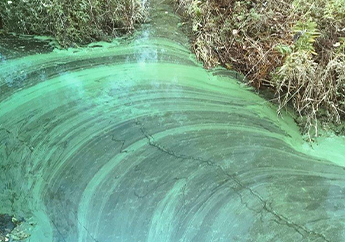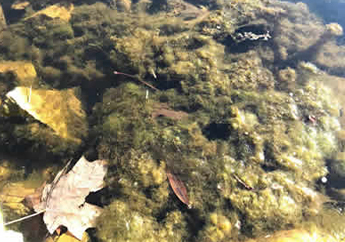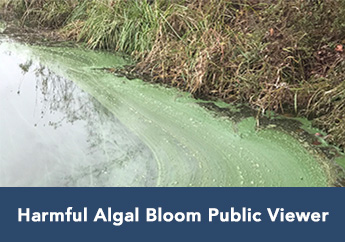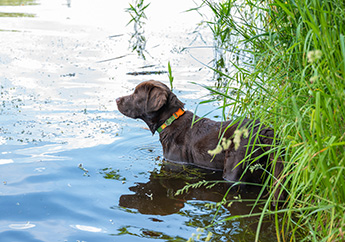Algae are mostly aquatic, plant-like organisms that play a major role in aquatic ecosystems. Algae are photosynthetic organisms, meaning they use sunlight to process food and produce oxygen for aquatic life. They also make up the base of the food chain. Algae can range in size from microscopic to giant kelp found in the ocean.
Large growths of algae are called algal blooms. Blooms occur when weather conditions and an over-abundance of nutrients (nitrogen and phosphorus) in a waterbody create the perfect environment for rapid growth. While these nutrients are natural parts of aquatic ecosystems, a wide range of human activities can cause too much nitrogen and phosphorus to enter the environment, known as nutrient pollution. Blooms can occur any time of the year, but typically occur during summer and early fall, when the weather is warm and water temperatures are high. Lakes and ponds are the most likely waterbodies to experience blooms, but they also can occur in streams, especially if they are slow moving or pooled.
Harmful Algal Blooms (HABs) are an issue of growing concern here in Missouri and across the nation. Algal blooms are considered harmful when they have detrimental effects on human, livestock or pet health, or on aquatic ecosystems. These blooms can severely reduce or eliminate oxygen in the water, leading to illnesses or death of large numbers of fish. Some algal blooms, such as cyanobacteria, also known as blue-green algae, are harmful because they produce toxins that can make people and animals sick. Because these blooms can present a variety of public and environmental health concerns, it is important for the public to be more aware of and better informed about HABs. The following information is intended to provide a basic understanding of what HABs are, where they can be found and how to identify them. Also included are crucial facts about the different risks that HABs can present, how to avoid exposure, the different symptoms of exposure and steps to take if a person or animal is showing signs of exposure. This information is also available in the department's Harmful Algal Blooms and Blue-green Algae - PUB3051 fact sheet.






